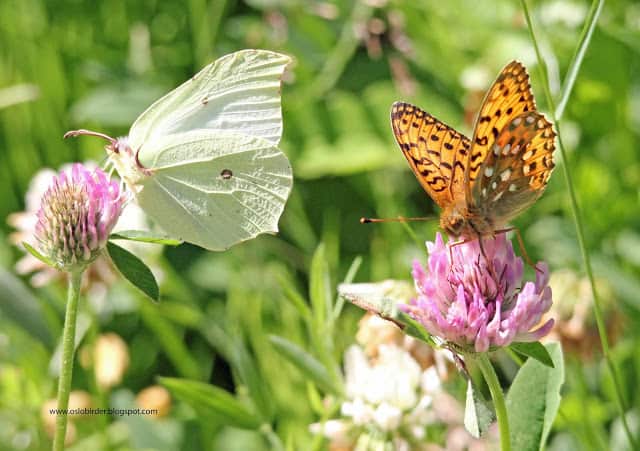July 21, 2018
I eventually found up to 9 breeding pairs of Red-backed Shrikes (5 pairs plus single birds at 4 sites) plus Wrynecks at 2 sites so these two species may well have an OK year after all. One of the pairs of Wrynecks had 3 young already out of the nest and I heard their begging call for the first time – a call which can be confused with the song of Firecrest!
One of the pairs of Red-backed Shrikes also had young which had just flown out of the nest and which were much shyer than their parents and kept in the depth of bushes most of the time. Raptors were very scarce with just local breeding Common Buzzard and Sparrowhawk – I had expected to find Honey Buzzards.
Butterflies continued to be my main focus. I added eight new species: Grayling / kystringvinge; Holly Blue / vårblåvinge – a very rare second generation adult; Small White / liten kålsommerfugl; Common Blue / tiriltungeblåvinge; Small Copper / ildgullvinge; Comma / hivt C; Heath Fritillary / marimjellerutevinge; Swallowtail / svalestjert – Sara found a caterpillar which we looked after for a few days.

I also managed my first ever picture of the Pearly Heath and managed to see from a picture the spine on the front leg of the male Silver-studded Blue which confirmed my suspicion that the smaller blue butterflies I were seeing were this species and not Idas Blue although as these two species can fly together I could well have seen both.












































Đăng nhận xét